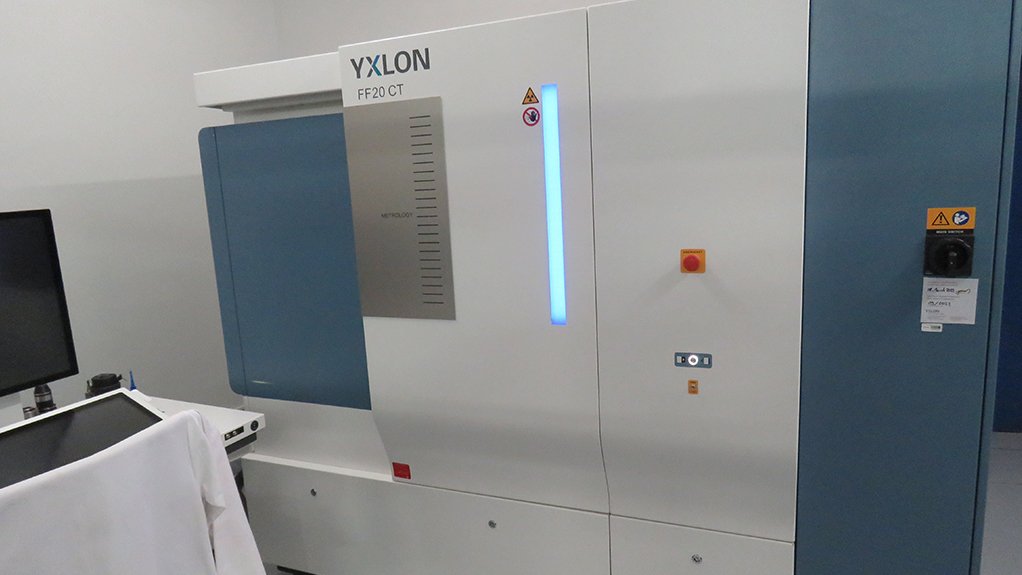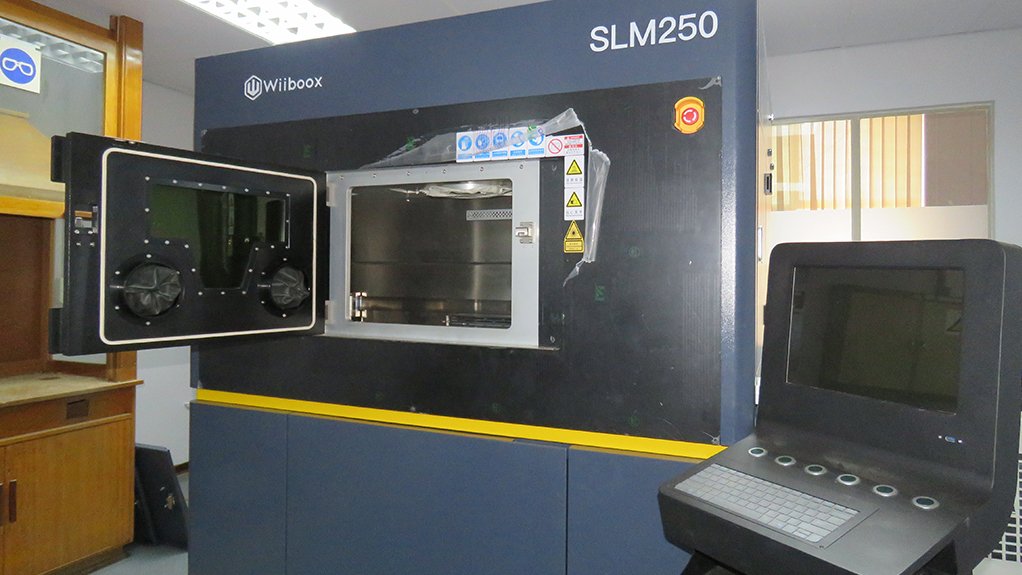Metrology, innovative tech can advance manufacturing sector



SAVING TIME AND COSTS Computed tomography imaging allows for the nondestructive scanning of manufactured items.
INNOVATIVE MANUFACTURING The NMISA offers support to the manufacturing industry through the dimensional evaluation of printed parts and surface analysis of printed implants
For consumers to benefit from fair trade – and to achieve efficient component manufacturing and effective protection of the environment – all measurements performed during the production and quality control processes, including weight and dimensions of manufactured products, need to be accurate, internationally equivalent and accepted by all parties.
National Metrology Institute of South Africa (NMISA) marketing and public relations manager Christelle Lourens says the NMISA plays an active role in ensuring that accurate measurements benefit the local manufacturing sector.
“The NMISA is mandated under the Department of Trade, Industry and Competition’s (DTIC’s) Measurements Units and Measurement Standards Act, No 18 of 2006, to maintain the national measurement standards for South Africa and demonstrate international equivalence of these standards.”
Lourens adds that, without a measurement infrastructure, it is difficult to manufacture to international specification and tolerances to ensure product integrity.
The NMISA ensures the comparability of measurements made locally with those of its trading partners, allowing for local goods to compete in world markets.
In addition to offering calibration, consultation and training services to local producers, the NMISA also provides working solutions for measurement challenges for industry and academia; this supports local development and manufacturing, as well as the beneficiation of additive materials.
She explains that metrology – as part of a functioning quality infrastructure – is essential to strengthening the local economy, in addition to growing production capacity for goods, including imported goods.
“For local industrialists to take advantage of the opportunities presented by the opening of the African market – with the implementation of the African Continental Free Trade Area – they will need the support offered by the NMISA to produce goods and services that can compete internationally,” stresses Lourens.
Materials Characterisation
Characterisation reveals the relationship between the manufacturing processes, the properties of materials and the eventual quality or performance of the product.
Examples of materials characterisation include the particle-size distribution of raw powder materials used during additive manufacturing, the determination of the metallic grain sizes, and the phase composition and tomography of a three-dimensional (3D) printed product.
“Additive manufacturing has gained interest recently as an alternative production route to established manufacturing processes. The computerised layer-by-layer addition of materials means that additive manufacturing uses less material, produces less waste and is ideal for fabricating products where customisation is needed.”
Materials characterisation also provides key information about the mechanical, thermal, electrical and optical properties of 3D-printed materials and components.
Consequently, such characterisation of raw feedstock powders and the eventual products produced by additive manufacturing is regarded as crucial to establishing such manufacturing as a viable production route.
“Failure occurs when a material, product or production step does not meet the required specifications and quality. Materials characterisation is then applied to provide insights into failure analysis that reveals the cause of the failure, and where along the production route failure occurred.”
Based on the results, an analyst can then suggest a remedy and even possible steps to prevent future failures.
She stresses that continuous materials characterisation activities during manufacturing offer the assurance that production continues at the required level of quality.
Ignoring materials characterisation services during manufacturing heightens the risk of inferior-quality products, delays in outputs of products, frequent failures and loss of consumer confidence.
3D Printing & CT Imaging
Advanced techniques, such as 3D-printing and computed tomography imaging, can play a significant role in manufacturing.
Currently, local 3D-printing is mainly focused on medical implants, where titanium is required, and in prototyping. The technology is costly and not optimally and widely used locally.
“This manufacturing process is ideal for the metal beneficiation drive of the DTIC, where locally mined titanium can be processed into the powder required for 3D metal printers. The NMISA offers support to the manufacturing industry through the dimensional evaluation of printed parts and surface analysis of printed implants.”
Lourens also points out that computed tomography imaging – generally also used in medical applications – allows for the nondestructive scanning of manufactured items. This can save local manufacturers time and costs when defects are analysed and corrected, without destroying the test piece.
Computed tomography imaging is also ideal for additive manufacturing processes, as medical and industrial computed tomography. Scanners use the same underlying, fundamental physics principles, although industrial scanners can scan denser and larger objects.
“This means they have higher X-ray voltage with higher penetration power. Digital results from the nondestructive inspection of parts can be used in the reproduction of the scanned part without the need to slice parts,” she concludes.
Comments
Press Office
Announcements
What's On
Subscribe to improve your user experience...
Option 1 (equivalent of R125 a month):
Receive a weekly copy of Creamer Media's Engineering News & Mining Weekly magazine
(print copy for those in South Africa and e-magazine for those outside of South Africa)
Receive daily email newsletters
Access to full search results
Access archive of magazine back copies
Access to Projects in Progress
Access to ONE Research Report of your choice in PDF format
Option 2 (equivalent of R375 a month):
All benefits from Option 1
PLUS
Access to Creamer Media's Research Channel Africa for ALL Research Reports, in PDF format, on various industrial and mining sectors
including Electricity; Water; Energy Transition; Hydrogen; Roads, Rail and Ports; Coal; Gold; Platinum; Battery Metals; etc.
Already a subscriber?
Forgotten your password?
Receive weekly copy of Creamer Media's Engineering News & Mining Weekly magazine (print copy for those in South Africa and e-magazine for those outside of South Africa)
➕
Recieve daily email newsletters
➕
Access to full search results
➕
Access archive of magazine back copies
➕
Access to Projects in Progress
➕
Access to ONE Research Report of your choice in PDF format
RESEARCH CHANNEL AFRICA
R4500 (equivalent of R375 a month)
SUBSCRIBEAll benefits from Option 1
➕
Access to Creamer Media's Research Channel Africa for ALL Research Reports on various industrial and mining sectors, in PDF format, including on:
Electricity
➕
Water
➕
Energy Transition
➕
Hydrogen
➕
Roads, Rail and Ports
➕
Coal
➕
Gold
➕
Platinum
➕
Battery Metals
➕
etc.
Receive all benefits from Option 1 or Option 2 delivered to numerous people at your company
➕
Multiple User names and Passwords for simultaneous log-ins
➕
Intranet integration access to all in your organisation




















